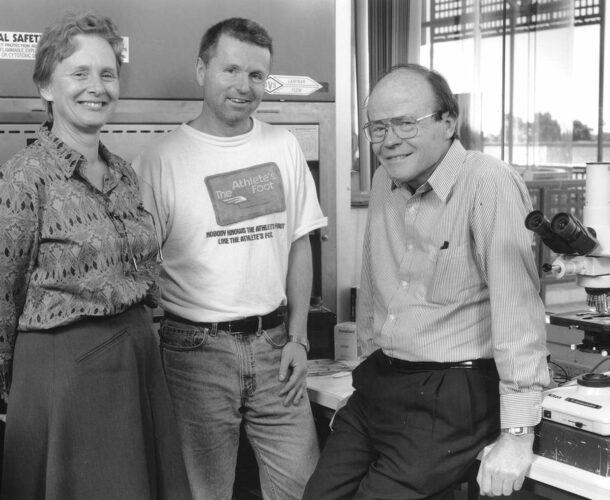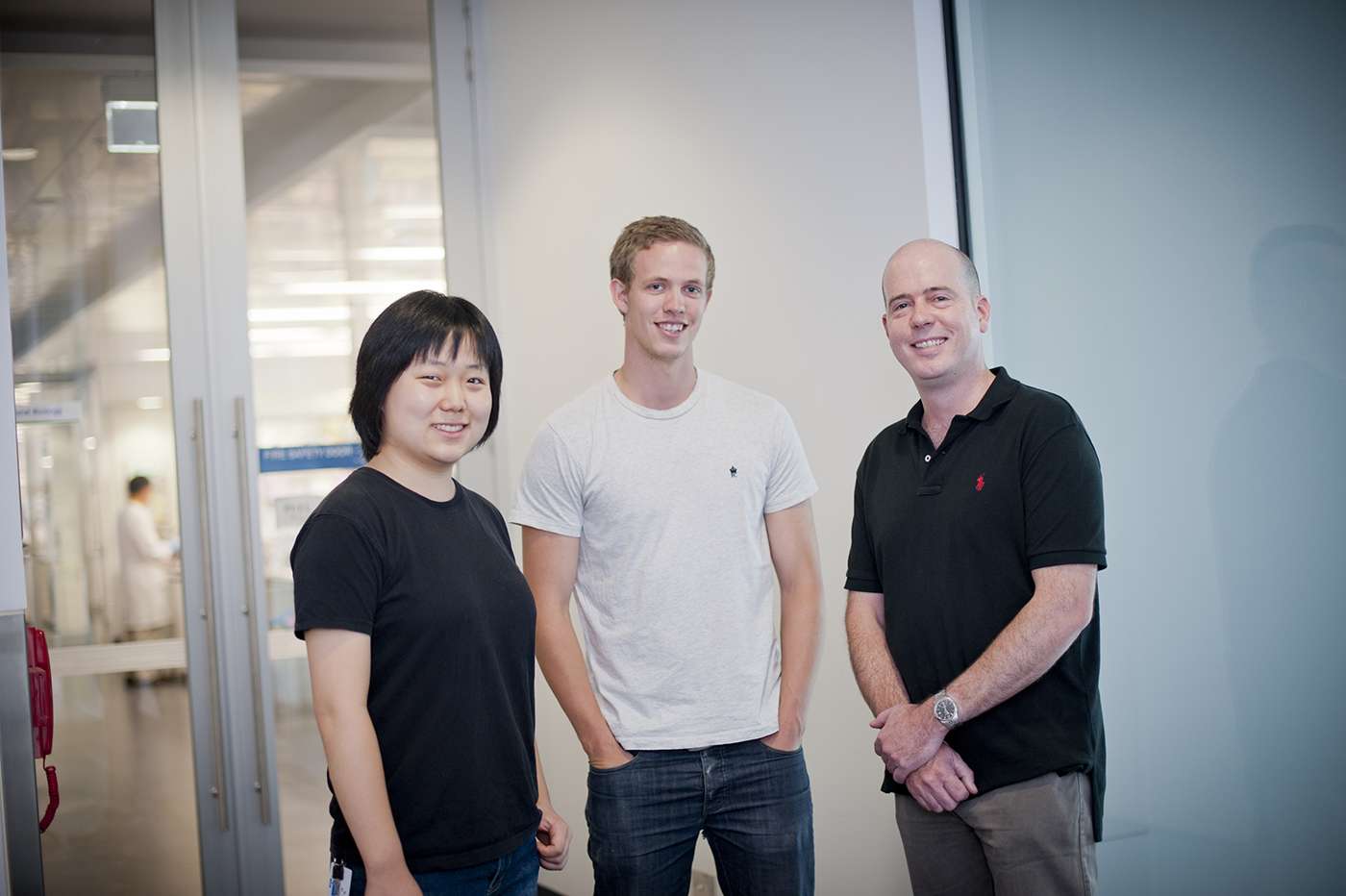Dr Alan Harris establishes two critical tools for Australian medical research at the Walter and Eliza Hall Institute: antibody-producing cell lines and transgenic mice.
One of his antibody-producing cell lines is later used to develop the Nobel-Prize winning monoclonal antibody technology, which led to new treatments for diseases such as rheumatoid arthritis and cancer. He was also one of the pioneers of transgenic mice, used the world over to better understand gene function and disease.
Bright, curious, focused
The Harris family sailed to Melbourne from Hastings, England as “ten pound Poms”, part of the post-war wave of British immigrants lured to Australia by cheap passage in an era when the country sought to “populate or perish”.
It would be hard to imagine the scheme delivering more enduring and ultimately life-saving value for that modest investment than 13-year-old Alan Harris who, with his parents and sisters, began a new life in western suburban Melbourne in 1951.
Alan Harris was bright, curious and focused. He moved from Williamstown High School to select-entry Melbourne High School and then The University of Melbourne, where he studied microbiology and biochemistry before heading to the University of Toronto, Canada, in the mid-1960s to pursue his PhD in the then exploding area of genetics.
His focus switched to immunology and he went on to postdoctoral studies at the young Salk Institute in California, US. Founded by Jonas Salk, the man who discovered the world’s first effective polio vaccine, the institute aimed to nurture multi-disciplinary investigations into a range of other global health issues.
Cell lines a vital tool
Then, “the key question dominating the field of immunology was how the body produces antibodies to fight infections. Harris realised the only way to find out would be to study cells making a single type of antibody molecule,” recalled his daughter, Vivian Harris, in the obituary she wrote for The Age in 2006. He established, for the first time, continuously growing lines of antibody producing cells taken from mice.
“This remarkable achievement opened up immunology to biochemistry and molecular biology,” said then Walter and Eliza Hall Institute director, Professor Suzanne Cory, in her tribute to Harris. “One of his lines later became the crucial tool that enabled the development of the Nobel Prize-winning monoclonal antibody technology that now plays such a vital role in medical research, diagnostics and cancer treatment.”
Though he had married in Canada and begun a family in California, Dr Harris had a yearning to return to Australia, recalls his son Michael Harris. In 1969 – supported by a Queen Elizabeth II Fellowship – he came back to Melbourne and a position at the Walter and Eliza Hall Institute, bringing with him his insights into propagating and sustaining antibody-producing cell lines.
Analysing tumour development
From the early 1980s Dr Harris worked primarily in the institute’s Molecular Genetics of Cancer division, focusing on the analysis of tumour development. He is credited, in the Encyclopedia of Australian Science, with being one of the first to develop transgenic mice – mice that have a piece of foreign DNA integrated into their genome, so it is expressed in every cell. They are invaluable in studying mammalian gene function and regulation and to model human diseases related to the expression of particular proteins.
Dr Harris and his institute colleagues soon uncovered how different types of leukaemias and lymphomas developed and their genetic susceptibilities.
In his career Dr Harris published 140 scientific papers. He retired in 2005 after 36 years at the institute. A year later, at the time of his death, Vivian Harris observed that 46 of those papers had been cited more than 50 times in the published scientific archive, and 26 had hundreds of citations. This was testimony to the importance and endurance of his pioneering work.
Life work informing disease
Another of his major legacies was the Atlas of Mouse Hematopathology (2000), written in collaboration with US scientist Dr Thor Frederickson. It provided a guide for cancer researchers for “decades to come”, says Cory. “Alan’s life work will continue to inform and help conquer the disease that carried him from us.”
Michael Harris remembers his father as a calm and upbeat, cheerful presence, with a strong sense of fairness and egalitarianism. He was, by nature, “a meticulous person and record keeper”, characteristics his son imagines predisposed him for the excellence and depth of his scientific work. Despite all his achievements he was never a grand-stander.
Dr Harris cherished his relationships with institute colleagues, said Michael Harris, enjoying the close community of like-minded, deeply motivated explorers of human biology.
His enthusiasm for mentoring and encouraging the next generation of scientists was recognised by the Walter and Eliza Hall Institute with the creation of the Alan W Harris Scholarships, which provide financial support for honours students.





